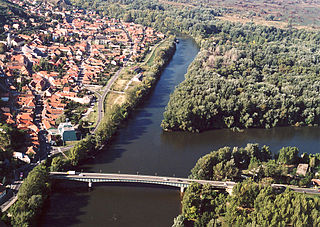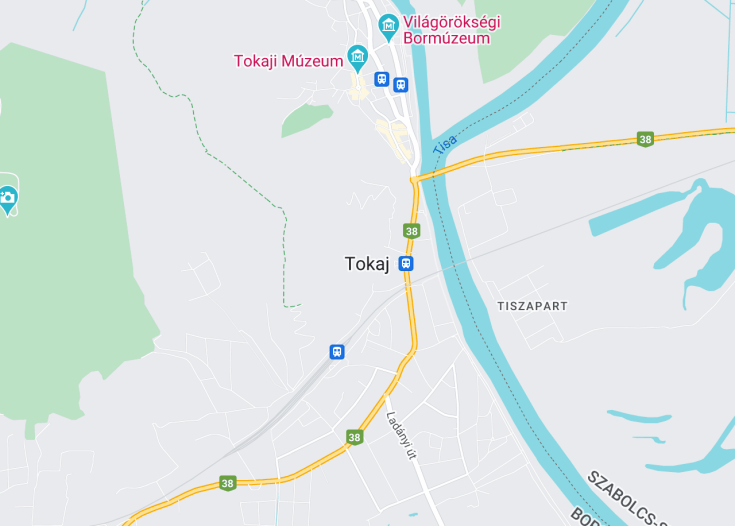Nestled in the northeastern region of Hungary, Tokaj is revered as a storied enclave of viticulture, distinguished particularly for its Tokaji Aszú, one of the world’s oldest botrytized wines. This UNESCO World Heritage site offers a sublime palette of cultural and historical layers, complemented by rolling vineyard landscapes and traditional wine cellars that beckon connoisseurs and travelers alike. A visit to Tokaj is not just a journey into the heart of Hungarian winemaking but also an exploration of a region rich in history and tradition.
For a true taste of the region’s heritage, consider booking a guided tour through the historic Tokaji wine cellars—some of which date back to the 13th century.
To fully experience the essence of Tokaj, plan your visit during the grape harvest season in early fall, when the vineyards are most vibrant and the wine festivals are in full swing.
Tokaj: Jewel of Hungarian Winemaking
| Country | Hungary |
| Time in Tokaj | GMT+1 |
| Language spoken | Hungarian |
| Population | 4,149 (According to the 2022 Census) |
| Currency | Hungarian Forint (HUF €) |
| Airports |
|
Located in northeastern Hungary, Tokaj is revered globally for its vineyards and wine, particularly the historic Tokaji Aszú, heralded by many as one of the finest dessert wines. This small town, nestled at the confluence of the Tisza and Bodrog rivers, is the heart of the Tokaj-Hegyalja wine region, a UNESCO World Heritage Site since 2002.
The history of winemaking in Tokaj is rich and dates back to at least the 12th century, but it became truly famous in the 17th century when the unique method of using botrytized (noble rot) grapes was perfected here. The volcanic soil and the microclimate of the region create a perfect environment for this type of viticulture. Tokaji wine, with its characteristic sweet taste and golden color, was a favorite amongst European nobility and was even referred to as the “Wine of Kings, King of Wines” by Louis XIV of France.
Aside from winemaking, Tokaj and its surroundings are brimming with cultural heritage sites including historical churches, museums, and charming architecture that reflects its storied past. The town, though small, is vibrant with wine festivals, particularly the Tokaj Harvest Days which attract tourists from around the globe. These events not only celebrate the unique viticultural legacy but also showcase Hungarian folk music, dance, and cuisine, contributing to an enriching visitor experience.
Moreover, the breath-taking landscapes around Tokaj, including rolling hills, vineyards, and rivers, offer numerous outdoor activities such as hiking, fishing, and river cruising, making it a versatile destination for travelers of all preferences.
Where is Tokaj?
Located in the northeastern part of Hungary, Tokaj is a pivotal area within the Szabolcs-Szatmár-Bereg county.
Distances:
| Route | Distance by car | Time by car |
|---|---|---|
| Budapest to Tokaj | 232 km | 2 hours 30 minutes |
| Debrecen to Tokaj | 60 km | 1 hour |
What is Tokaj famous for?
Renowned primarily for its white wines, Tokaj is most famous for its Tokaji Aszú, a sumptuous sweet wine historically favored across European courts and still celebrated worldwide for its distinctive flavor and quality.
History
First Settlements to the Medieval Era (11th century)
The region that would become Tokaj first saw settlements in the ancient times, with evidence suggesting the presence of Celtic tribes followed by Roman influence. Officially, Tokaj’s significance burgeoned in the 11th century when Hungarian tribes settled in the area, attracted by the fertile valleys ideal for agriculture, including viticulture. The village was first mentioned in records dating from 1067, marking the beginning of its storied history intertwined with vine cultivation.
Renaissance and the Golden Age of Wine (1540s – late 1600s)
The true potential of Tokaj’s terroir was realized during the Renaissance when the region’s unique method of using botrytized grapes (aszú) to produce sweet wines was developed. By the end of the 17th century, Tokaj wine became a sought-after luxury in European courts, enjoyed by nobility and even prescribed as a remedy for a variety of ailments. Its acclaim was such that it was famously referred to as “Wine of Kings, King of Wines” by Louis XIV of France.
The Habsburg Influence and Modernization (18th century – early 20th century)
Under the Habsburg monarchy, Tokaj continued to flourish. Vineyard classifications were introduced, mimicking those of Bordeaux, thus standardizing wine quality and reinforcing the region’s reputation. The phylloxera epidemic in the late 19th century devastated vineyards, but recovery and modernization followed, with systematic replanting and introduction of new technologies in wine-making during the early 20th century.
World Wars and Soviet Period (20th century)
The two World Wars and subsequent Soviet control impacted Tokaj significantly. Collective farming policies and state-controlled production during the Soviet era diminished the quality of Tokaj wine, focusing on quantity over quality. However, the fall of the Iron Curtain and Hungary’s transition to a market economy opened up new opportunities for revival.
Revival and Global Recognition (1990 – Present)
The last few decades have seen a renaissance in Tokaj’s wine-making, marked by significant investment, both local and international, and a return to traditional methods combined with modern technology. Today, Tokaj is not only a UNESCO World Heritage site but also a symbol of Hungary’s cultural and gastronomic re-emergence on the world stage. Its wines continue to receive international accolades, celebrating a history that spans over a millennium.
Visit Tokaj
What to see and do in Tokaj, Hungary.
Explore the scenic beauty and cultural heritage of Tokaj, a region famed for its historic vineyards and exquisite wines. Key highlights include:
- The Tokaj Wine Museum, which delves into the rich history of viticulture and wine-making in the area.
- Guided tours of prestigious wineries where visitors can taste the legendary Tokaji Aszú and other local varieties.
- The Tokaj Gallery, hosting art exhibits in a beautifully restored synagogue, offers a glimpse into the artistic traditions of the region.
- Hiking and cycling along the Bodrog river, enjoying the lush landscapes of the Tokaj Hills.
Annual Festivals and Events in Tokaj
Throughout the year, Tokaj hosts various events celebrating its viticultural heritage:
- Tokaj Spring: Held in May, this festival marks the beginning of the wine tourism season, featuring wine tastings and cultural performances.
- Harvest Days in September: A celebration of the grape harvest where visitors can participate in traditional harvesting activities.
- Tokaj-Hegyalja Market: Occurring on weekends from May to October, this market showcases local crafts, foods, and, of course, wines.
Best time to visit Tokaj
The ideal time to visit Tokaj is during the late spring or early autumn. May and September offer pleasant weather, the lush green of the vineyards, and the opportunity to participate in local festivals such as Tokaj Spring and the Harvest Days.
Is Tokaj worth visiting?
Indeed, Tokaj is a remarkable destination that appeals not only to wine enthusiasts but also to lovers of history and nature. With its storied past, breathtaking landscapes, and world-renowned wines, Tokaj offers a unique and enriching experience that embodies much of Hungary’s cultural and natural beauty. Whether it is wandering through ancient vineyards, exploring historical sites, or indulging in the culinary delights, Tokaj is unquestionably worth a visit.









